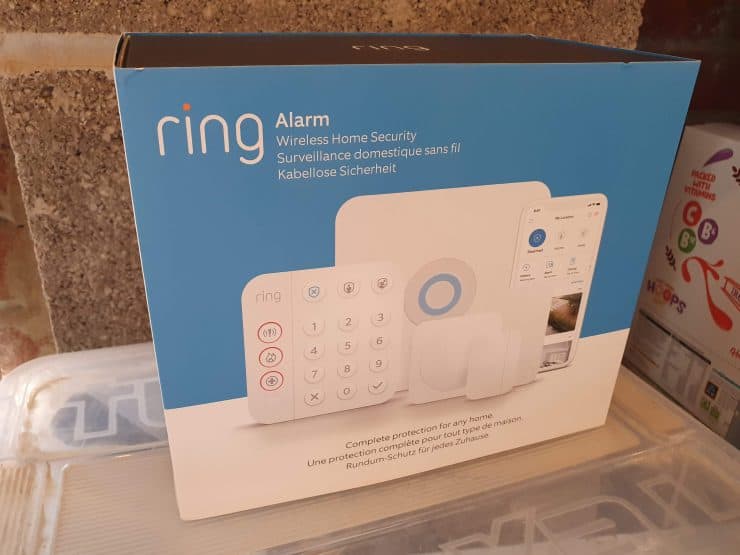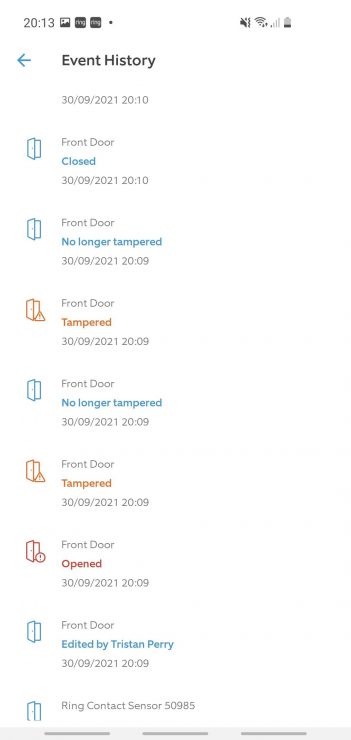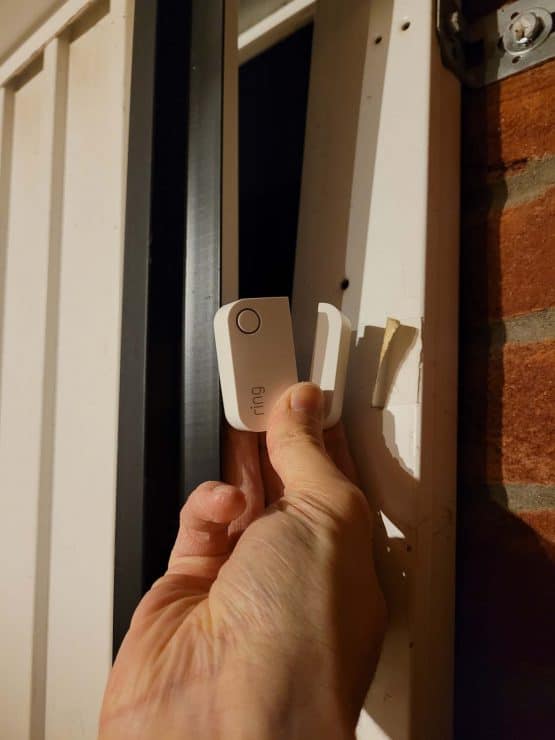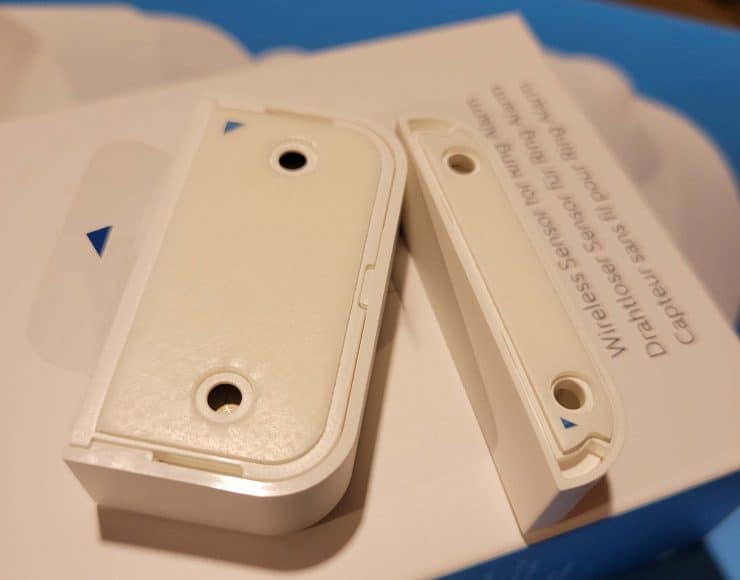The Ring contact sensor might be the key to smart home security, but what good is it if you can’t mount it?
There’s a lot of concern about mounting these contact sensors on door sensor and windows. If their alignment isn’t good enough, they’re not going to be able to provide the security coverage you’re looking for. The good news is that these sensors are actually pretty forgiving when it comes to how they are mounted.
Ring contact sensors do not need to be flush when mounted. They can be mounted at any angle so long as they are no more than 1 inch apart. You can use shims, spacers, and even remove the magnet from one half of the sensor to mount them at all kinds of different angles.
Let’s get in touch with the Ring alarm contact sensor.
What is the Ring Alarm System?

The Ring alarm system is one of the best smart home security systems on the market. Ring might be most known for their doorbell cameras, but it’s a fully integrated smart home system that pushes this company to the top of the smart tech arena.
This alarm system has you covered for everything from alerting you about open doors to letting you know if your washing machine has flooded your laundry room. This alarm system comes in a package deal that contains at least the keypad, the Ring Alarm base station, and a few sensors.
Here’s the full list of optional components that can come together to form your Ring alarm system.
- Keypad
- Contact Sensors
- Motion Sensors / Motion Detector
- Flood & Freeze Sensors
- Ring Alarm Base Station
These devices can also be integrated with Ring cameras, of course the Ring doorbell, and best of all they all work with Alexa.
The most intriguing piece of this puzzle is the Ring contact sensor. Let’s take a closer look at what goes on inside this little device.
Inside the Ring Alarm Security Kit

The Ring contact sensors are an integral part of the Ring alarm system. In fact, some might consider these the core of the alarm system and the most important feature.
The Ring contact sensors can tell you when doors or windows have been opened. They work because of a sensor that comes into components. There’s an active component that contains the electronics and the battery, and a passive component that contains just the magnet.
When the magnet moves too far away from the component with the electronics, it trips the alarm and sends a notification to your device.
Does the Ring Contact Sensor Need to be Mounted Flush?
The Ring contact sensors do not need to be mounted flush. In fact, you can mount them up to 1 inch apart and will still function as intended. More advanced users have even removed the magnet from the side without the electronics, to open up all kinds of new mounting positions.
There’s plenty of different ways to mount your Ring contact sensors to your doors and windows. Let’s take a look at a few of the easier ways to mount these sensors and a few of the more involved ways.
How to Mount the Ring Contact Sensor on Uneven Surfaces
If you’re lucky, the mounting surfaces for your Ring contact sensors are going to be perfectly flush. This means that your sensors will be just barely touching when they line up and you’ll have nothing to worry about:

However, every home has its little quirks and sometimes we have to work around them.
Here’s all the tips you need to mount Ring contact sensors in your home.
Offset Mounting Up to 1 Inch Apart
First things first we’re gonna talk about the simplest way of mounting around difficult doors and windows. This is to leave some space in between your Ring contact sensors which can be up to 1 inch.
Keep in mind that this can be 1 inch in any direction. They can be 1 inch apart horizontally, 1 inch apart vertically, or 1 inch apart by an angle. This 1 inch is simply the maximum distance that the internal magnets can function at. Anything greater than 1 inch will cause the magnets to not function and your alarms to constantly go off.

Offset mounting might take a little bit of trial and error on your part. This 1 inch is a general guideline when it comes to mounting Ring contact sensors. You might be able to get just a little bit more distance on yours or maybe a bit less depending on the relative strength of the magnets inside of the specific device that you own.
You can help yourself out by doing some test mounting. Easily removable sticky tack is a great way to temporarily mount your Ring security system to check for a good fit and make sure that they’re getting the functionality you are looking for.
Once you figured out your mounting, all you need to do is screw them in place or use the included double-sided tape to quickly and easily mount them.
Right Angle Mounting
As it turns out, the Ring contact sensors don’t actually have to meet up flush at all. It doesn’t matter that there is space between the Ring contact sensors, they meet at right angles, or they meet at any angle in-between:

The only thing that matters is that they are 1 inch or less apart in order for the magnet to work.
This means you can mount them at right angles. This can be an ideal option for doors with decorative moldings or certain window trimmings that aren’t conducive to mounting your Ring contact sensors flush with each other.
You can also use other mounting angles as long as the two sensors are less than 1 inch apart. This can be especially useful if you’re mounting on more decorative doors or even on outdoor gates.
Adding Shims or Wedges
Let’s face it. One of the best things about Ring technology is the clean Apple-adjacent aesthetic. Right angle mourning and offset mounting spoil some of that clean design. Luckily, you can keep your sensors flush by using wedges or shims.
Wedges and shims are simply small pieces of angled wood that you can use to make sure that things are level. If you’ve ever had a wobbly table, you technically shimmed that using whatever material you put under the short leg to balance it out. You can apply the same principle to Ring contact sensors.
This is going to require a little bit of math, or a little bit of trial and error, in order to make sure you can get an even fit. You can either measure the angle that you would need to adjust your contact sensor in order for them to be flush, or you can buy different angles of shims in order to guess and get it right:
Where do you buy shims? Shims of varying size and material should be available at your local hardware store. This is an industrial product so they’re typically sold in large containers.
You can also make your own shim by using any scrap wood you have laying around your house. You might be able to find extra shims, or scrap wood, by reaching out to neighbors, family, or friends that happened to have some extra woodworking materials lying around.
You can also take a high-tech approach and 3D print a shim that has the perfect size and angle for your project.
Then all you need to do is use double-sided tape to attach the shim to the wall and then attach the contact sensor to the shim. This can get you around some of the most complicated mounting problems like decorative molding or windows with odd angles.
Custom and 3D-Printed Spacers
One of the best things about the Ring contact sensor is that the only thing you need for the sensor to function is that the internal magnets align. The sensor does not need to be physically connected to your door or window, it’s just sensing when those magnets separate.
This means you can use custom or 3D printed spacers to help get your magnets to connect – and Etsy has some 3D products available. This is especially useful with some doors that are set very deep into the frame.
Your door might be 2 or 3 inches from the edge of the frame that you needed the sensor to connect to. A 3D printed riser can help fill that space.
If the 3D printed look doesn’t quite fit with your home decor plans, you can also opt for a wooden Riser. This can be painted or stained to match your door which will help it to blend in and minimize the visual noise of having this extra piece of material supporting your contact sensor.
Physically Remove the Magnet

Here’s a little bit of the marketing magic behind the Ring contact sensor. It looks like you’re paying for two halves of a technological gadget when you buy the Ring contact sensor. After all, it comes in two pieces and you need both of them for the device to work properly.
However, you’re actually paying for one technological gadget and a magnet in a fancy plastic housing.
That’s right, the second half of your Ring contact sensor is simply just a magnet in a plastic case. If you’re having trouble getting your Ring contact sensor to fit properly on your door frame or window, you can just ditch that plastic case which frees up tons of versatility when it comes to installing the magnet.
That loose magnet can be installed on awkward door moldings, at strange angles, and even directly onto window panes for old fashioned windows. When you get rid of the large plastic housing, you’re free to install the magnet as you choose.
The big thing to keep in mind here is that you’re going to need to install this magnet using double-sided tape. Since there’s no more housing, there won’t be any mounting brackets for screws. You also need to do some trial and error to make sure the magnet is properly aligned up since you won’t have that case guiding your alignment anymore.

Hello. I don’t want my doors and windows monitored, I just want the sound alert on the Ring Contact Sensor to notify me when they are opened. So, is a Ring Alarm Monitor or Hub necessary for the Ring Contact Sensor to work?
Hello, you will need a Ring Alarm Base Station for the contact sensor to make the usual sound yes. Alternatively you could explore a non-Ring contact sensor, and combine it with a smart speaker. For example, but an Alexa compatible contact sensor and have this make a sound through an Echo speaker. That might work better for you?